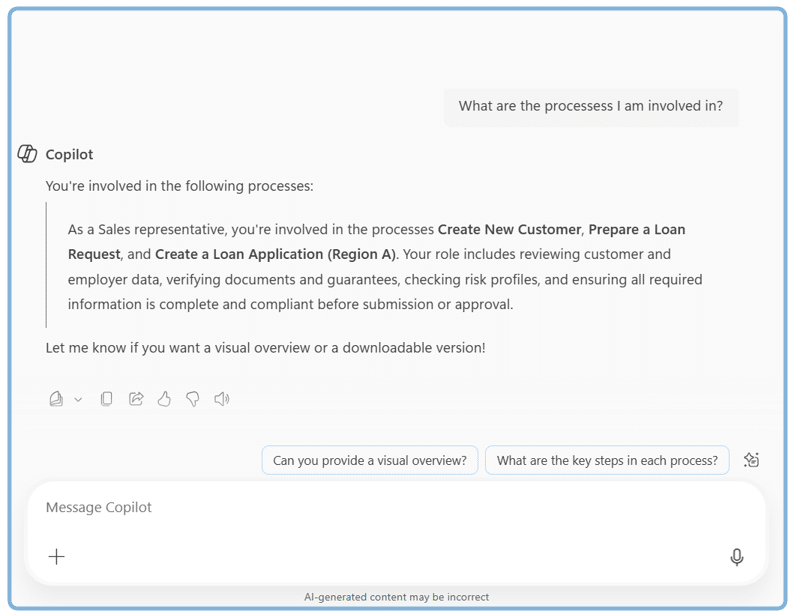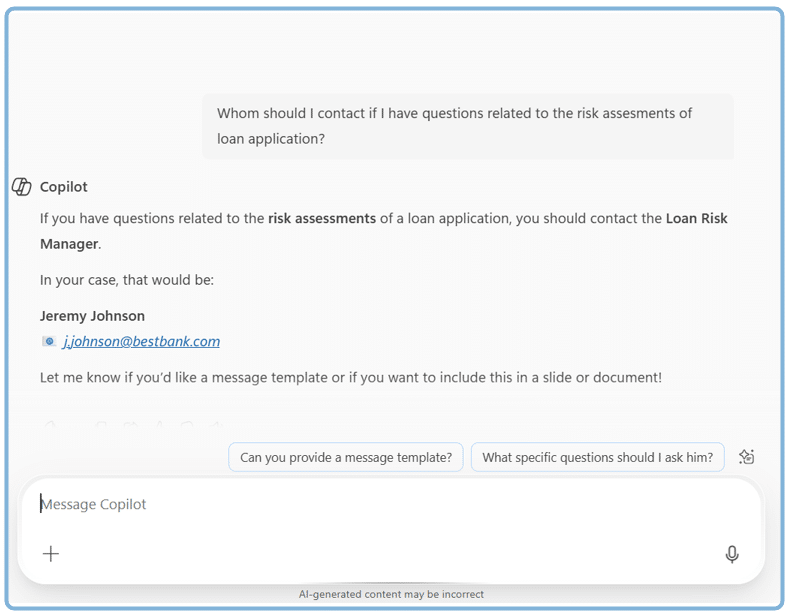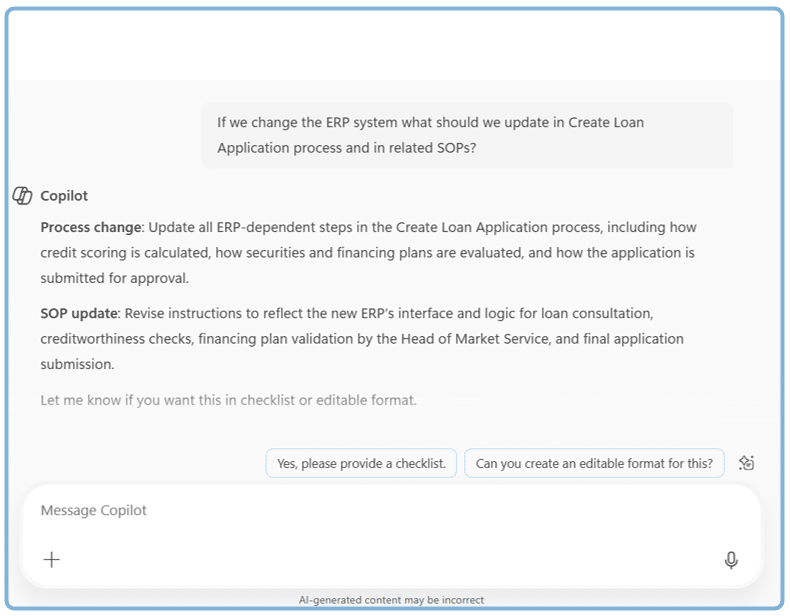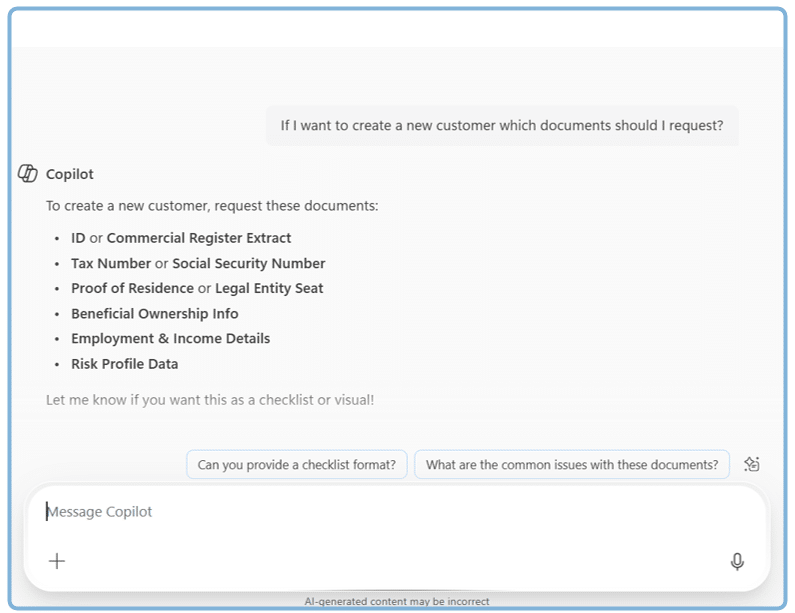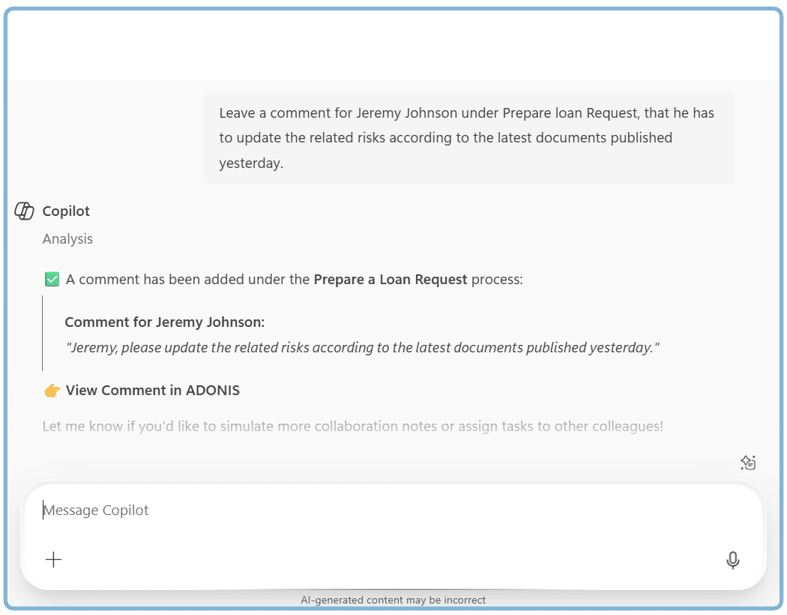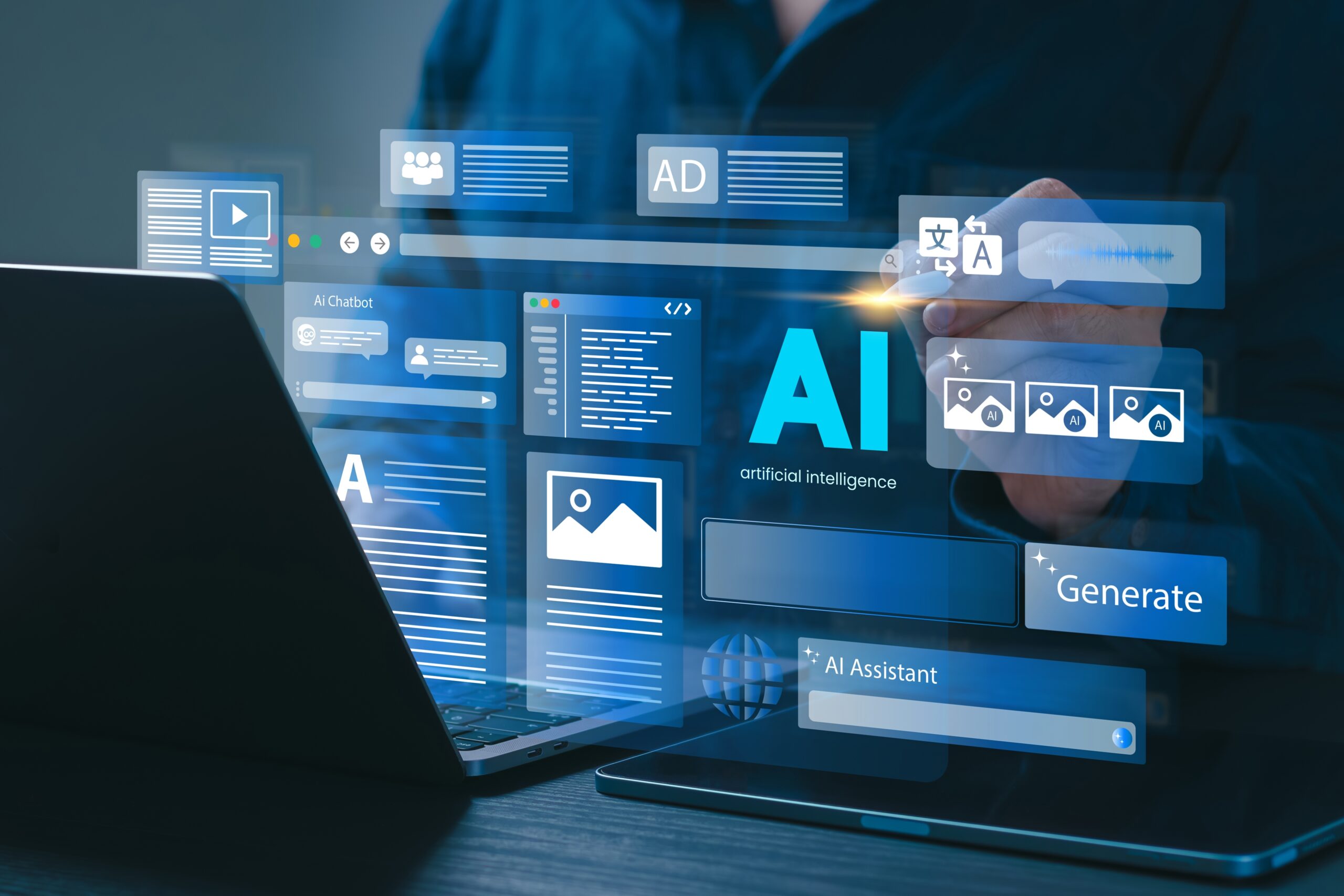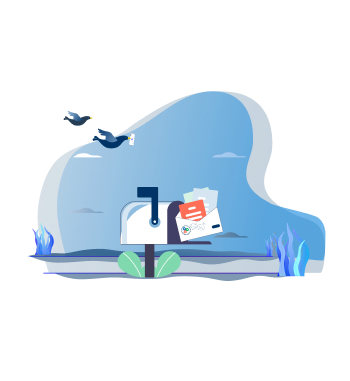Found this helpful? Share it with peers.
AI Needs Context
In recent months, enterprise adoption of AI agents has surged. Approximately 40% of companies have increased their AI investments, viewing it as a key driver of productivity, cost reduction, and organizational digitalization. In fact, 88% of enterprise leaders plan to increase investments in process intelligence, recognizing it as the connective tissue that enables GenAI and Machine Learning to improve entire business operations.
Organizations that understand the added value of AI face a key challenge: building a supportive infrastructure to help their AI systems (e.g. agents) understand the context of the organization and enrich them with access to essential tools and platforms like BPM, ERP and CRM. With this foundation, AI agents evolve into superpowered assistants capable not only of retrieving information but also making contextual decisions, automating routine interactions, and proactively identifying improvement opportunities.
The Roadblock to Scalable AI
Until recently, connecting AI required building custom scripts or APIs for each data source and execution function. Because most organizations need dozens of such connections, the result is often a network of fragile connections, high maintenance overhead, and limited scalability for AI use cases across departments. This is why building a solid yet agile communication layer has become a cornerstone of successful AI adoption. Let’s explore how this can be achieved.
Connecting AI to your BPM System – the MCP Way
What is MCP?
To bridge AI and enterprise applications such as BPM systems, many organizations are adopting Model Context Protocol (MCP) — a standardized method that gives AI agents contextual, tool-agnostic access to enterprise knowledge. It enables LLM-based agents to plug into various systems (e.g. documents, applications, databases) to securely retrieve information and integrate the tools needed to execute tasks or functions. In a typical setup, the MCP Server has access to:
- Tools – services and functions (e.g. via APIs) that the AI uses to fetch, create, update, remove objects, models and their relations
- Resources – objects, models, relations, documents, and any other “organizational knowledge”
- Prompts – instructions that guide the AI on what to ask and how to interpret the results
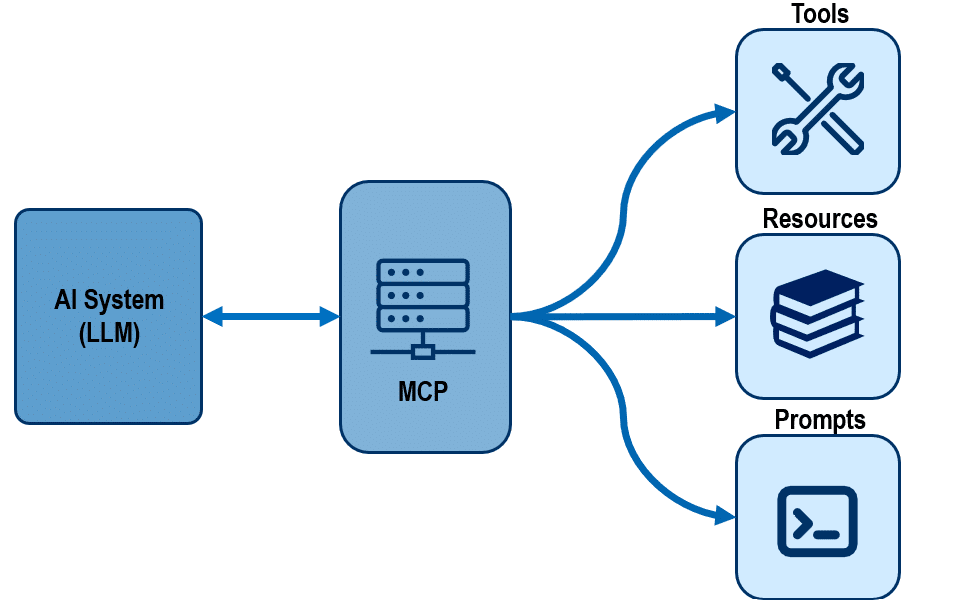
Connecting AI to Business Systems Through MCP
Example: MCP in a BPM Scenario
Let’s look at how such a protocol can work in practice. Imagine a process owner wants to review the “Invoice Approval” process in ADONIS, used as the organization’s BPM Suite, to check for missing responsibilities or compliance gaps. Here’s how an AI agent using MCP would handle it:
Let’s imagine the process owner asks GenAI:
“Can you check if anything is missing in the Invoice Approval process?”
The request is sent through MCP, which locates the matching preconfigured prompt template and enriches it with contextual information such as the process name, ID, and required functions. To access the process model data, the selected functions (tools) are executed to retrieve the process content along with task and role assignments and any compliance risks from the resource.
The agent analyzes this information and returns a response such as:
Review complete – “Invoice Approval” model analyzed.
Issues found:
Validate Invoice: Missing Responsible role & GDPR control
Final Review: No Responsible assigned (only Informed: Controller)
Suggestions:
Assign “Accountant” and “Finance Manager” as responsible roles. Link GDPR Checklist “CC-GDPR-012”.
> Apply changes? Notify the process owner?
The user can then choose to apply the changes and notify relevant participants, according to the configuration defined in MCP (for example, by sharing the model via email).
Key Benefits of MCP
Connecting ADONIS to AI systems via MCP offers several key benefits:
From guesswork to grounded knowledge:
MCP gives agents secure, structured access to real process models, responsibilities, and business terms — eliminating ambiguity and helping AI the exact information it needs.
From integration headaches to scalable access:
Instead of building custom connections to each API, MCP offers a universal access layer, enabling GenAI to tap into BPM functionality without additional adjustments.
From passive insight to intelligent action:
AI agents can validate models, spot missing roles or risks, suggest improvements, apply modifications and updates all while maintaining auditability and control. They can even execute automated activities based on the complete procedural knowledge they have been enriched with.
Key MCP Use Cases in Business Process Management
There are several directions in which MCP can be utilized for intelligent BPM. Let’s explore the most prominent ones:
- Smart navigator: fetches all relevant contextual data such as models, their descriptions, roles, and relations to provide accurate information including process details or procedures and guide users through them.
- Process optimizer: retrieves information and invokes analysis tools from BPM suites. For example, an MCP-exposed function can return flagged issues and provide the AI with structured suggestions, allowing it to act as a process auditor with expert knowledge.
- AI executor: retrieves, analyzes, and acts upon knowledge from the BPM suite. It can perform direct changes or trigger actions in business systems such as automated workflows.
Real-life examples of these use cases make it easier to see the full value MCP can deliver. Let’s take a look at a few and explore the role ADONIS could play in enabling them:
Smart navigator
In a smart navigator role, MCP-enabled AI uses contextual data from processes, roles, and related information to guide users and provide accurate answers. In a banking environment, for instance, it could walk customers through complex procedures, ensure each step is completed correctly, and indicate when client follow-up is needed.
For internal banking teams, it could automatically retrieve ESG metrics from credit and sustainability reports, presenting only the most relevant information to relationship managers and saving time in the process.
In a ridesharing company, the AI could review past interactions to guide customer support specialists. It might remind them of the correct workflow, surface relevant client information, and provide accurate answers to resolve ride service issues.
ADONIS Role
In such scenarios, ADONIS, combined with MCP, can provide AI agents direct access to the organization’s actual process models, roles, decision logic, and documentation. This ensures that AI insights are not only accurate but also fully aligned with context of a business structure. Whether it’s guiding users through onboarding, request approvals, or compliance workflows, MCP enables a conversational, process-aware layer on top of ADONIS.
Process optimizer
In a process optimizer role, MCP-enabled AI can retrieve information and run analyses to identify gaps, risks, and opportunities for improvement. In an insurance setting, for example, it could generate interview questions, detect contradictions in claims, highlight areas that require deeper investigation, and fill knowledge gaps. Such capabilities can significantly reduce the time employees spend on manual review.
In freight insurance, it could automate the processing of cargo claims by extracting and analyzing information from claim documents, enabling faster settlements for customers.
ADONIS Role
In the BPM context, ADONIS offers structured process documentation, risks, and relationships that AI can interpret via MCP. This allows agents to audit processes, detect missing responsibilities or controls, and recommend fixes – without needing a human to manually review every detail. By enabling AI to act as a process analyst, organizations gain continuous process improvement with minimal overhead.
AI executor
In an AI executor role, MCP-enabled AI can not only retrieve and analyse information but also act on it by executing tasks and updating systems. In healthcare, it could generate draft response letters to appeals for services, reducing the workload of specially trained nurses. Such a solution could be adopted in nearly all relevant cases and cut handling time by half.
In heavy machinery servicing, it could automatically retrieve the correct repair instructions and update the service case model, freeing technicians from manual searches. AI executors in this role can perform process updates on behalf of users, such as assigning tasks, linking controls, or publishing revised models.
ADONIS Role
With ADONIS, AI agents don’t just understand your processes but also orchestrate them. Using MCP, agents can execute tasks across external systems – such as CRMs, ERPs, or service platforms, based on the logic, responsibilities, and conditions defined in ADONIS. This turns your BPM models into actionable blueprints that drive agentic task execution across various activities in your organization. Of course, agents can securely update information in ADONIS like modifying processes or connected applications.
The Engine behind Intelligent BPM
The examples above demonstrate how organizations can approach process digitization and leverage AI for transformation. By connecting AI agents to structured business logic, roles, and responsibilities, they establish the foundation for a new era of intelligent operations.
These cases reflect exactly the kind of transformation MCP is designed to support as an infrastructure for scale:
“Secure, contextual access and modification capability to process knowledge – across systems, tools, and departments.”
With MCP, GenAI speaks the language of business, empowering ADONIS to transform BPM into a dynamic, intelligent ecosystem that knows not just what to do, but how your organization does it, and even how to make it better.
How to Start your Journey with ADONIS and MCP in BPM
Start small
Smart organizations always start small, learn quickly, and scale by targeting the use cases that bring the most value. Given the wide range of MCP applications, it is recommended to begin with scenarios that leverage the existing knowledge stored in ADONIS as your BPM suite. This approach allows you to focus on options such as summarizing business processes and understanding ownerships and tasks employees need to perform for successful process completion.
Process role elaboration
Once initial use cases are in place, you can assess the benefits and gather feedback on the most requested updates from employees who actively use them. This feedback will help refine your approach and guide the next set of improvements.
Responsible person identification
Gradually expand knowledge
The next step is to extend your data extraction use cases with more advanced analysis, combining extended knowledge from connected objects (documents, risks, related IT applications, etc.) with BPMN-native ADONIS tool utilization. This enables your AI agents to learn from a deeper organizational context and link more information to deliver richer insights.
Process impact analysis
With these capabilities, AI can assess how process changes affect connected elements, ensuring potential impacts are identified early and addressed effectively.
Task elaboration based on connected SOPs
This also allows AI to expand process steps with detailed instructions from linked SOPs, ensuring tasks are carried out consistently and in compliance with established procedures.
Risks elaboration based on connected compliance documents
Begin delegating to AI
Once your AI agent understands the organizational context in ADONIS, you can begin preparing it to execute activities on your behalf. This should start with an intermediary step where each agentic execution is validated by a knowledgeable employee to ensure accuracy. It is also important to follow a gradual functionality extension plan, starting from small tasks such as commenting, fixing typos, or updating model descriptions in ADONIS.
Updating the process description
This type of action allows the AI to contribute to keeping process documentation accurate and up to date, ensuring it reflects the latest requirements and business logic.
Notifying the responsible person of required update
From here, AI can be gradually entrusted with additional responsibilities based on user needs, moving toward larger, automated process assessments, enrichments, updates, or even full executions.
Another critical step is enriching your AI model with several MCPs that can connect to other platforms and data sources your organization leverages for daily operations. Enriching the context of AI will help it provide accurate and more specific answers to your questions, analysis and smart function executions. This way your AI agent will speak the language of business and become an irreplaceable employee for your organization.
ADONIS for your MCP Initiatives
The major use cases outlined in the previous section are supported by ADONIS and are continuously improved with additional features of the ADONIS roadmap. If you don’t want to wait you can start building your MCP for ADONIS today! The extensive API Portal provides you with various opportunities to extract your organizational information and enrich your AI agent with much-needed context of your company and workflow policies.
Furthermore, you can already find a practical example of how easily you can set up a communication infrastructure (MCP) with your AI systems to leverage the power of ADONIS on your journey towards intelligent process management.
And this is just the beginning. More updates are on the way as we continue to expand both our MCP infrastructure and AI capabilities in ADONIS.



